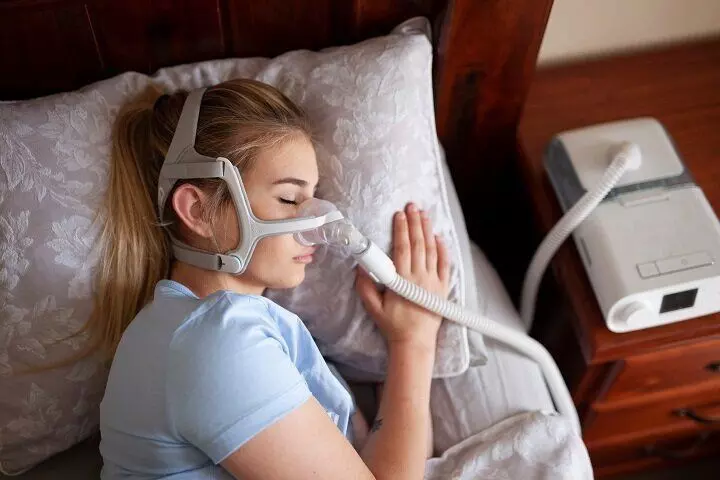India’s sleep apnea burden at 50 million; urgent measures should heal scourge, say experts
Many people complain of waking up tired and fatigued every day. These could be a sign of obstructive sleep apnea (OSA), a serious sleep disorder that affects your breathing during sleep.
By Newsmeter Network
Representational Image.
Hyderabad: Hyderabad: The Indian Association of Surgeons for Sleep Apnea (IASSA) concluded its ninth annual conference, IASSACON 2023 on Sunday. Over 400 specialists, including ENT surgeons, pulmonologists and dentists from across the country participated in the three-day conference, held from July 14 to 16 at AIG Hospitals in Hyderabad.
“Many people complain of waking up tired and fatigued every day. These could be a sign of obstructive sleep apnea (OSA), a serious sleep disorder that affects your breathing during sleep. OSA can lead to various health complications if left untreated. Don’t ignore the symptoms. Loud snoring, gasping for air, and daytime sleepiness are common signs of OSA. With early detection and proper treatment, you can regain quality sleep and improve your overall health,” said Dr Srinivas Kishore Sistla, director of the Department of ENT, Head and Neck Surgery, AIG Hospitals and organising chairman of IASSACON 2023.
According to the estimates, more than 50 million people in India are suffering from sleep apnea and even greater numbers are undiagnosed. With less than 600 sleep labs across the country to conduct the accurate diagnosis, it is essential that more such facilities are opened up and awareness among not just the public but also in doctors’ communities needs to be prioritised.
Raising awareness
IASSACON 2023 had insightful sessions, interactive workshops, and live demonstrations showcasing cutting-edge surgical techniques for sleep apnea treatment. Dr D Nageshwar Reddy, chairman of AIG Hospitals, moderated the discussion, shedding light on the importance of raising awareness about this prevalent sleep disorder.
From left to right: Dr. Srinivas Kishore, Director - ENT, AIG Hospitals, Dr. Dipankar Datta, Secretary, IASSA, Dr. Vijaya Krishnan P, President, IASSA, Dr. Mohan Kameswaran, Patron, IASSA, and Dr. Deenadayal DS, Patron, IASSA.
The panel had representation from various sectors including aviation safety and insurance. “The menace of OSA needs to be tackled from all fronts and insurance is a key component for providing accessible care. This disorder can have grave consequences for society as many accidents happen when the driver of a moving vehicle dozes off. We are planning a universal screening programme for the same, which would help in identifying such patients and helping them with the right kind of treatment,” Dr Reddy said.
Treatment of sleep apnea needs a multidisciplinary approach. Dr Rajeev Menon, clinical director of Cardiology, AIG Hospitals gave an example when he said, “A patient with severe cardiac arrhythmia came for consultation after visiting almost all major centres and was advised for dual heart-lung transplant. An indication of sleep apnea was noticed and the patient underwent a sleep study, got diagnosed with obstructive sleep apnea, put on a CPAP machine and eventually within a couple of months, his heart function improved.”
Modern methods
One of the workshops was centred on Drug-Induced Sleep Endoscopy in Obstructive Sleep Apnea. This workshop also aimed to equip participants with the necessary skills to identify and evaluate the precise site of obstruction in patients with obstructive sleep apnea using drug-induced sleep endoscopy. By offering practical insights and guidance, this workshop helped to enhance the expertise of attendees in devising effective treatment strategies.
Another highlight of IASSACON 2023 was the hands-on workshop on 3D-printed skull models. Attendees had the opportunity to interact with and study models, which replicated the complex anatomy of the skull and airways. This workshop provided a deeper understanding of the anatomical challenges associated with sleep apnea and showcased the potential of 3D printing technology in surgical planning and treatment customisation.